Résultats de recherche de titre
Articles 1496401 à 1496420 sur 1496659
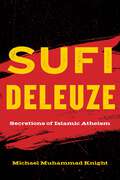
Sufi Deleuze: Secretions of Islamic Atheism
Par Michael Muhammad Knight. 2023
“There is always an atheism to be extracted from a religion,” Deleuze and Guattari write in their final collaboration, What…
Is Philosophy? Their claim that Christianity “secretes” atheism “more than any other religion,” however, reflects the limits of their archive. Theological projects seeking to engage Deleuze remain embedded within Christian theologies and intellectual histories; whether they embrace, resist, or negotiate with Deleuze’s atheism, the atheism in question remains one extracted from Christian theology, a Christian atheism. In Sufi Deleuze, Michael Muhammad Knight offers an intervention, engaging Deleuzian questions and themes from within Islamic tradition. Even if Deleuze did not think of himself as a theologian, Knight argues, to place Deleuze in conversation with Islam is a project of comparative theology and faces the challenge of any comparative theology: It seemingly demands that complex, internally diverse traditions can speak as coherent, monolithic wholes. To start from such a place would not only defy Islam’s historical multiplicity but also betray Deleuze’s model of the assemblage, which requires attention to not only the organizing and stabilizing tendencies within a structure but also the points at which a structure resists organization, its internal heterogeneity, and unpredictable “lines of flight.”A Deleuzian approach to Islamic theology would first have to affirm that there is no such thing as a universal “Islamic theology” that can speak for all Muslims in all historical settings, but rather a multiplicity of power struggles between major and minor forces that contest each other over authenticity, authority, and the making of “orthodoxy.” The discussions in Sufi Deleuze thus highlight Islam’s extraordinary range of possibilities, not only making use of canonically privileged materials such as the Qur’an and major hadith collections, but also exploring a variety of marginalized resources found throughout Islam that challenge the notion of a singular “mainstream” interpretive tradition. To say it in Deleuze’s vocabulary, Islam is a rhizome.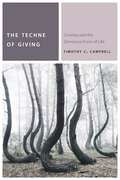
The Techne of Giving: Cinema and the Generous Form of Life (Commonalities)
Par Timothy C. Campbell. 2017
Over the last five years, corporations and individuals have given more money, more often, to charitable organizations than ever before.…
What could possibly be the downside to inhabiting a golden age of gift-giving? That question lies at the heart of Timothy Campbell’s account of contemporary giving and its social forms. In a milieu where gift-giving dominates, nearly everything given and received becomes the subject of a calculus—gifts from God, from benefactors, from those who have. Is there another way to conceive of generosity? What would giving and receiving without gifts look like?A lucid and imaginative intervention in both European philosophy and film theory, The Techne of Giving investigates how we hold the objects of daily life—indeed, how we hold ourselves—in relation to neoliberal forms of gift-giving. Even as instrumentalism permeates giving, Campbell articulates a resistant techne locatable in forms of generosity that fail to coincide with biopower’s assertion that the only gifts that count are those given and received. Moving between visual studies, Winnicottian psychoanalysis, Foucauldian biopower, and apparatus theory, Campbell makes a case for how to give and receive without giving gifts. In the conversation between political philosophy and classic Italian films by Visconti, Rossellini, and Antonioni, the potential emerges of a generous form of life that can cross between the visible and invisible, the fated and the free.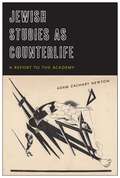
Jewish Studies as Counterlife: A Report to the Academy
Par Adam Zachary Newton. 2019
This book tells the story of a Jewish Studies that hasn’t fully happened—at least not yet. Newton asks what we…
mean when we say “Jewish Studies”—and when we imagine it not as mere amalgam but as a project. Jewish Studies offers a unique perspective from which to view the horizon of the academic humanities because, although it arrived belatedly, it has spanned a range of disciplinary locations and configurations, from an “origin story” in nineteenth-century historicism and philology, to the emancipatory politics of the Enlightenment, to the ethnicity-driven pluralism of the postwar decades, to more recent configurations within an interdisciplinary cultural studies. The conflicted allegiances with respect to traditions, disciplines, divisions, stakes, and stakeholders represent the structural and historical situation of the field, as it comes into contact with the humanities more broadly.At once a literary and philosophical thinker, Newton deploys a tableau of texts in concert with an ensemble of vivid, elastic tropes not only to theorize Jewish Studies but also to reimagine it as an agent of that potency Jacques Derrida calls “leverage”—a force multiplier for the field’s multiple possibilities. In refiguring a Jewish Studies to come, the book intervenes in a broader discourse about the challenge of professing disciplinary knowledges while promoting transit across their boundaries. Jewish Studies as Counterlife further amplifies Newton’s career-long articulation of the dialogic as the staging ground of ethical encounter.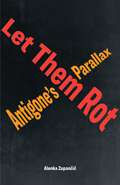
Let Them Rot: Antigone’s Parallax (Idiom: Inventing Writing Theory)
Par Alenka Zupančič. 2023
A provocative, highly accessible journey to the heart of Sophocles’ Antigone elucidating why it keeps resurfacing as a central text…
of Western thought and Western culture.There is probably no classical text that has inspired more interpretation, critical attention, and creative response than Sophocles’ Antigone. The general perspective from which the book is written could be summarized with this simple question: What is it about the figure of Antigone that keeps haunting us? Why do all these readings and rewritings keep emerging? To what kind of always contemporary contradiction does the need, the urge to reread and reimagine Antigone—in all kinds of contexts and languages—correspond? As key anchor points of this general interrogation, three particular “obsessions” have driven the author’s thinking and writing about Antigone. First is the issue of violence. The violence in Antigone is the opposite of “graphic” as we have come to know it in movies and in the media; rather, it is sharp and piercing, it goes straight to the bone. It is the violence of language, the violence of principles, the violence of desire, the violence of subjectivity. Then there is the issue of funerary rites and their role in appeasing the specific “undeadness” that seems to be the other side of human life, its irreducible undercurrent that death alone cannot end and put to rest. This issue prompted the author to look at the relationship between language, sexuality, death, and “second death.” The third issue, which constitutes the focal point of the book, is Antigone’s statement that if it were her children or husband lying unburied out there, she would let them rot and not take it upon herself to defy the decree of the state. The author asks, how does this exclusivist, singularizing claim (she would do it only for Polyneices), which she uses to describe the “unwritten law” she follows, tally with Antigone’s universal appeal and compelling power? Attempting to answer this leads to the question of what this particular (Oedipal) family’s misfortune, of which Antigone chooses to be the guardian, shares with the general condition of humanity. Which in turn forces us to confront the seemingly self-evident question: “What is incest?”Let Them Rot is Alenka Zupančič’s absorbing and succinct guided tour of the philosophical and psychoanalytic issues arising from the Theban trilogy. Her original and surprising intervention into the broad and prominent field of study related to Sophocles’ Antigone illuminates the classical text’s ongoing relevance and invites a wide readership to become captivated by its themes.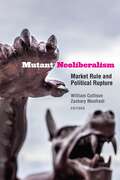
Mutant Neoliberalism: Market Rule and Political Rupture
Par William Callison and Zachary Manfredi. 2020
Tales of neoliberalism’s death are serially overstated. Following the financial crisis of 2008, neoliberalism was proclaimed a “zombie,” a disgraced…
ideology that staggered on like an undead monster. After the political ruptures of 2016, commentators were quick to announce “the end” of neoliberalism yet again, pointing to both the global rise of far-right forces and the reinvigoration of democratic socialist politics. But do new political forces sound neoliberalism’s death knell or will they instead catalyze new mutations in its dynamic development?Mutant Neoliberalism brings together leading scholars of neoliberalism—political theorists, historians, philosophers, anthropologists and sociologists—to rethink transformations in market rule and their relation to ongoing political ruptures. The chapters show how years of neoliberal governance, policy, and depoliticization created the conditions for thriving reactionary forces, while also reflecting on whether recent trends will challenge, reconfigure, or extend neoliberalism’s reach. The contributors reconsider neoliberalism’s relationship with its assumed adversaries and map mutations in financialized capitalism and governance across time and space—from Europe and the United States to China and India. Taken together, the volume recasts the stakes of contemporary debate and reorients critique and resistance within a rapidly changing landscape.Contributors: Étienne Balibar, Sören Brandes, Wendy Brown, Melinda Cooper, Julia Elyachar, Michel Feher, Megan Moodie, Christopher Newfield, Dieter Plehwe, Lisa Rofel, Leslie Salzinger, Quinn Slobodian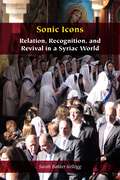
Sonic Icons: Relation, Recognition, and Revival in a Syriac World (Orthodox Christianity and Contemporary Thought)
Par Sarah Bakker Kellogg. 2025
A vivid, artfully crafted, and deeply hopeful account of one community’s struggle to rediscover and reinvent itself after a century…
of genocidal loss, dispossession, and displacementTo the extent that Middle Eastern Christians register in Euro-American political imaginaries, they are usually invoked to justify Western military intervention into countries like Iraq or Syria, or as an exemption to anti-Islamic immigration policies because of an assumption that their Christianity makes them easily assimilable in the so-called “Judeo-Christian” West.Using the tools of multisensory ethnography, Sonic Icons uncovers how these views work against the very communities they are meant to benefit. Through long term fieldwork in the Netherlands among Syriac Orthodox Christians—also known as Assyrians, Aramaeans, and Syriacs—Bakker Kellogg reveals how they intertwine religious practice with political activism to save Syriac Christianity from the twin threats of political violence in the Middle East and cultural assimilation in Europe.In a historical moment when much of their tradition has been forgotten or destroyed, their story of self-discovery is one of survival and reinvention. By reviving the late antique Syriac liturgical tradition known as the Daughters and Sons of the Covenant, they seek a complex form of recognition for what they understand to be the ethical core of Christian kinship in an ethnic as well as in a religious sense, despite living in societies that do not recognize this unhyphenated form of ethnoreligiosity as a politically legitimate mode of public identity. Drawing on both theological and linguistic understandings of the icon, Sonic Icons rethinks foundational theoretical accounts of ethnicization, racialization, and secularization by examining how kinship gets made, claimed, and named in the global politics of minority recognition. The icon, as a site of communicative and reproductive power, illuminates how these processes are shaped by religious histories of struggle for sovereignty over the reproductive future.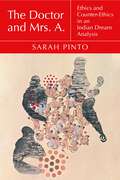
Just before India’s independence, a young Punjabi woman, ill at ease in her marriage and eager for personal and national…
freedom, sat down with psychiatrist Dev Satya Nand for an experiment in his new method of dream analysis. The published analysis documents a surge of emotion and reflections on sexuality, gender, marriage, ambition, trauma, and art. “Mrs. A.” (as she is known) turned to female figures from Hindu myth to reimagine her social world and its ethical arrangements, envisioning a future beyond marriage, colonial rule, and gendered constraints.This book explores the conversation between Mrs. A. and Satya Nand, its window onto gender and sexuality in late colonial Indian society, and the ways Mrs. A. put ethics in motion, creating alternatives to ideals of belonging, recognition, and consciousness. It finds in Mrs. A.’s musings repertoires for the creative transformation of ideals and explores the possibilities of thinking with a dynamic concept of counter-ethics. An unconventional history of gender and sexuality in late colonialism, this book reminds us that the west did not invent feminism, that psychiatry’s history of innovation and creativity is global, and that ethical thinking does not need to center on western myths or paradigms.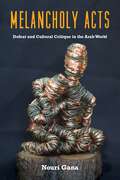
Melancholy Acts: Defeat and Cultural Critique in the Arab World
Par Nouri Gana. 2023
CHOICE: OUTSTANDING ACADEMIC TITLEHow do the literatures and cultures of oppressed societies survive and flourish in spite of the overdetermining…
conditions of precarity and injustice of which they are a product and against which they protest? Might the symptom of oppression become simultaneously the agent of its critique? Melancholy Acts offers richly nuanced reflections on these questions through a series of wide-ranging engagements with Arab thought, literature, and film in the aftermath of the 1948 dispossession of Palestinians and the 1967 military defeat of Arab armies.Melancholy Acts offers a psychoaffective theory of cultural production that arises out of the disjunction between political impoverishment and cultural resistance to colonial and neoliberal oppression. Such a theory allows the author to trace the melancholy disposition of Arabic literary and filmic productions and to discern the precarious rhetorical modes of their critical intervention in a culture that is continually strained to its breaking point. Across six chapters, Melancholy Acts reads with rigor and sensitivity contentious topics of Arab contemporaneity such as secular modernity and manhood, Arab nationalism and leftism, literary and artistic iltizām, or commitment, Islamism, and martyrdom. The book tracks the melancholy politics that inform the literary and cultural projects of a multitude of Arab novelists (Ghassan Kanafani and Naguib Mahfouz); poets and playwrights (Mahmoud Darwish, Nizar Qabbani, and Saadallah Wannous); filmmakers (Nouri Bouzid, Moufida Tlatli, Youssef Chahine, and Hany Abu Assad); alongside the work of such intellectuals as Hussein Muruwwa, Malek Bennabi, Karima Lazali, George Tarabishi, and Fethi Benslama, from within the Arab world, as well as such non-Arab thinkers as Freud, Lacan, Adorno, Fanon, Spivak, Butler, and Žižek.Melancholy Acts charts a fresh and bold new approach to Arabic and comparative literature that combines in interlaced simultaneity a high sensitivity to local idioms, as they swerve between symptom and critique, with nuanced knowledge of the geopolitics of theory and psychoanalysis.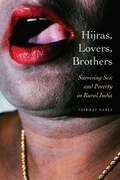
Hijras, Lovers, Brothers: Surviving Sex and Poverty in Rural India (Thinking from Elsewhere)
Par Vaibhav Saria. 2021
Winner, 2023 Bernard S. Cohn Prize, Association for Asian StudiesWinner, 2021 Joseph W. Elder Prize in the Indian Social SciencesWinner,…
2021 Ruth Benedict Prize, Association for Queer AnthropologyHonorable Mention, 2023 Anne Bolin & Gil Herdt Book Prize, Human Sexuality & Anthropology Interest GroupHijras, one of India’s third gendered or trans populations, have been an enduring presence in the South Asian imagination—in myth, in ritual, and in everyday life, often associated in stigmatized forms with begging and sex work. In more recent years hijras have seen a degree of political emergence as a moral presence in Indian electoral politics, and with heightened vulnerability within global health terms as a high-risk population caught within the AIDS epidemic. Hijras, Lovers, Brothers recounts two years living with a group of hijras in rural India. In this riveting ethnography, Vaibhav Saria reveals not just a group of stigmatized or marginalized others but a way of life composed of laughter, struggles, and desires that trouble how we read queerness, kinship, and the psyche.Against easy framings of hijras that render them marginalized, Saria shows how hijras makes the normative Indian family possible. The book also shows that particular practices of hijras, such as refusing to use condoms or comply with retroviral regimes, reflect not ignorance, irresponsibility, or illiteracy but rather a specific idiom of erotic asceticism arising in both Hindu and Islamic traditions. This idiom suffuses the densely intertwined registers of erotics, economics, and kinship that inform the everyday lives of hijras and offer a repertoire of self-fashioning beyond the secular horizons of public health or queer theory.Engrossingly written and full of keen insights, the book moves from the small pleasures of the everyday—laughter, flirting, teasing—to impossible longings, kinship, and economies of property and substance in order to give a fuller account of trans lives and of Indian society today.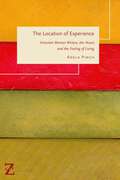
We tend to feel that works of fiction give us special access to lived experience. But how do novels cultivate…
that feeling? Where exactly does experience reside? The Location of Experience argues that, paradoxically, novels create experience for us not by bringing reality up close, but by engineering environments in which we feel constrained from acting. By excavating the history of the rise of experience as an important category of Victorian intellectual life, this book reveals how experience was surprisingly tied to emotions of remorse and regret for some of the era’s great women novelists: the Brontës, George Eliot, Margaret Oliphant, and Elizabeth Gaskell. It shows how these writers passed ideas about experience—and experiences themselves—among each other.Drawing on intellectual history, psychology, and moral philosophy, The Location of Experience shows that, through manipulating the psychological dimensions of fiction’s formal features, Victorian women novelists produced a philosophical account of experience that rivaled and complemented that of the male philosophers of the period.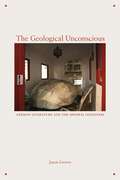
The Geological Unconscious: German Literature and the Mineral Imaginary
Par Jason Groves. 2020
Already in the nineteenth century, German-language writers were contending with the challenge of imagining and accounting for a planet whose…
volatility bore little resemblance to the images of the Earth then in circulation. The Geological Unconscious traces the withdrawal of the lithosphere as a reliable setting, unobtrusive backdrop, and stable point of reference for literature written well before the current climate breakdown.Through a series of careful readings of romantic, realist, and modernist works by Tieck, Goethe, Stifter, Benjamin, and Brecht, Groves elaborates a geological unconscious—unthought and sometimes actively repressed geological knowledge—in European literature and environmental thought. This inhuman horizon of reading and interpretation offers a new literary history of the Anthropocene in a period before it was named.These close readings show the entanglement of the human and the lithic in periods well before the geological turn of contemporary cultural studies. In those depictions of human-mineral encounters, the minerality of the human and the minerality of the imagination become apparent. In registering libidinal investments in the lithosphere that extend beyond Carboniferous deposits and beyond any carbon imaginary, The Geological Unconscious points toward alternative relations with, and less destructive mobilizations of, the geologic.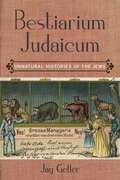
Bestiarium Judaicum: Unnatural Histories of the Jews
Par Jay Geller. 2018
Given the vast inventory of verbal and visual images of nonhuman animals—pigs, dogs, vermin, rodents, apes disseminated for millennia to…
debase, dehumanize, and justify the persecution of Jews, Bestiarium Judaicum asks: What is at play when Jewish-identified writers tell animal stories? Focusing on the nonhuman-animal constructions of primarily Germanophone authors, including Sigmund Freud, Heinrich Heine, Franz Kafka, and Gertrud Kolmar, Jay Geller expands his earlier examinations (On Freud’s Jewish Body: Mitigating Circumcisions and The Other Jewish Question: Identifying the Jew and Making Sense of Modernity) of how such writers drew upon representations of Jewish corporeality in order to work through their particular situations in Gentile modernity. From Heine’s ironic lizards to Kafka’s Red Peter and Siodmak’s Wolf Man, Bestiarium Judaicum brings together Jewish cultural studies and critical animal studies to ferret out these writers’ engagement with the bestial answers upon which the Jewish and animal questions converged and by which varieties of the species "Jew" were identified.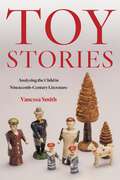
Toy Stories: Analyzing the Child in Nineteenth-Century Literature
Par Vanessa Smith. 2023
Toy Stories: Analyzing the Child in Nineteenth-Century Literature explores the stakes of recurrent depictions of children’s violent, damaging, and tenuously…
restorative play with objects within a long nineteenth century of fictional and educational writing. As Vanessa Smith shows us, these scenes of aggression and anxiety cannot be squared with the standard picture of domestic childhood across that period. Instead, they seem to attest to the kinds of enactments of infant distress we would normally associate with post-psychoanalytic modernity, creating a ripple effect in the literary texts that nest them: regressing developmental narratives, giving new value to wooden characters, exposing Realism’s solid objects to odd fracture, and troubling distinctions between artificial and authentic interiority. Toy Stories is the first study to take these scenes of anger and overwhelm seriously, challenging received ideas about both the nineteenth century and its literary forms. Radically re-conceiving nineteenth-century childhood and its literary depiction as anticipating the scenes, theories, and methodologies of early child analysis, Toy Stories proposes a shared literary and psychoanalytic discernment about child’s play that in turn provides a deep context for understanding both the “development” of the novel and the keen British uptake of Melanie Klein’s and Anna Freud’s interventions in child therapy. In doing so, the book provides a necessary reframing of the work of Klein and Freud and their fractious disagreement about the interior life of the child and its object-mediated manifestations.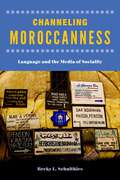
Channeling Moroccanness: Language and the Media of Sociality
Par Becky L. Schulthies. 2021
Honorable Mention, 2022 L. Carl Brown AIMS Book Prize in North African StudiesWhat does it mean to connect as a…
people through mass media? This book approaches that question by exploring how Moroccans engage communicative failure as they seek to shape social and political relations in urban Fez. Over the last decade, laments of language and media failure in Fez have focused not just on social relations that used to be and have been lost but also on what ought to be and had yet to be realized. Such laments have transpired in a range of communication channels, from objects such as devotional prayer beads and remote controls; to interactional forms such as storytelling, dress styles, and orthography; to media platforms like television news, religious stations, or WhatsApp group chats. Channeling Moroccanness examines these laments as ways of speaking that created Moroccanness, the feeling of participating in the ongoing formations of Moroccan relationality. Rather than furthering the discourse about Morocco’s conflict between liberal secularists and religious conservatives, this ethnography shows the subtle range of ideologies and practices evoked in Fassi homes to calibrate Moroccan sociality and political consciousness.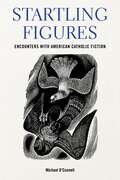
Startling Figures is about Catholic fiction in a secular age and the rhetorical strategies Catholic writers employ to reach a…
skeptical, indifferent, or even hostile audience. Although characters in contemporary Catholic fiction frequently struggle with doubt and fear, these works retain a belief in the possibility for transcendent meaning and value beyond the limits of the purely secular. Individual chapters include close readings of some of the best works of contemporary American Catholic fiction, which shed light on the narrative techniques that Catholic writers use to point their characters, and their readers, beyond the horizon of secularity and toward an idea of transcendence while also making connections between the widely acknowledged twentieth-century masters of the form and their twenty-first-century counterparts.This book is focused both on the aspects of craft that Catholic writers employ to shape the reader’s experience of the story and on the effect the story has on the reader. One recurring theme that is central to both is how often Catholic writers use narrative violence and other, similar disorienting techniques in order to unsettle the reader. These moments can leave both characters within the stories and the readers themselves shaken and unmoored, and this, O’Connell argues, is often a first step toward the recognition, and even possibly the acceptance, of grace. Individual chapters look at these themes in the works of Flannery O’Connor, J. F. Powers, Walker Percy, Tim Gautreaux, Alice McDermott, George Saunders, and Phil Klay and Kirstin Valdez Quade.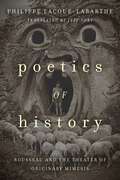
Poetics of History: Rousseau and the Theater of Originary Mimesis
Par Philippe Lacoue-Labarthe. 2019
Rousseau’s opposition to the theater is well known: But is it possible that Rousseau’s texts reveal a different conception of…
theatrical imitation? This short but potent text from a powerful European thinker places Rousseau at the origin of modern speculative philosophy by showing that his thinking on the theater articulates a radical thinking of originary mimesis that was to inflect the future of philosophy.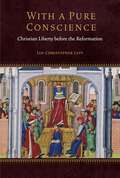
With a Pure Conscience: Christian Liberty before the Reformation (Fordham Series in Medieval Studies)
Par Ian Christopher Levy. 2025
Offers new perspectives on freedom of conscience and religious liberty by tracing their origins to the Middle Ages, thereby challenging…
the common assumption that these core tenets of modernity were products of the EnlightenmentDeeply committed to the formation of a just and sacred society, medieval theologians and canonists developed sophisticated arguments in defense of religious liberty and freedom of conscience. They did so based upon the conviction that each human person possesses an inalienable right to pursue his or her spiritual vocation and to inquire into the truth, provided that such pursuits were not deemed injurious to the commonweal. For this was an age in which all power, whether secular or sacred, was held to be exercised legitimately only insofar as it served the common good. Within these basic parameters there existed a domain of personal freedom guaranteed by natural and divine law that could not be infringed by either secular or ecclesiastical authority. Theologians and canonists did not countenance blind obedience to reigning powers nor did they permit Christians to stand idle in the face of manifest transgressions of sacred tradition, constitutional order, and fundamental human rights.Such foundational principles as the sacred domain of conscience, freedom of intellectual inquiry, dissent from unjust authority, and inalienable personal rights had been carefully developed throughout the later Middle Ages, hence from the twelfth through the fifteenth centuries. Contrary to the popular conception, therefore, the West did not need to wait for the Protestant Reformation, or the Enlightenment, for these values to take hold. In fact, the modern West may owe its greatest debt to the Middle Ages. With a Pure Conscience sheds further light on these matters in a variety of contexts, within and without the medieval university walls, and often amid momentous controversies. This was a robust intellectual culture that revered careful analysis and vigorous disputation in its relentless quest to understand and defend the truth as it could be ascertained through both reason and revelation.With a Pure Conscience: Christian Liberty before the Reformation is available from the Knowledge Unlatched on an open-access basis.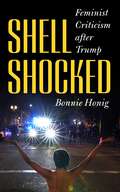
Shell-Shocked: Feminist Criticism after Trump
Par Bonnie Honig. 2021
A biting, funny, up-to-the-minute collection of essays by a major political thinker that gets to the heart of what feminist…
criticism can do in the face of everyday politics.Stormy Daniels offered a #metoo moment, and Anderson Cooper missed it. Conservatives don’t believe that gender is fluid, except when they’re feminizing James Comey. “Gaslighting” is our word for male domination but a gaslight also lights the way for a woman’s survival.Across two dozen trenchant, witty reflections, Bonnie Honig offers a biting feminist account of politics since Trump. In today’s shock politics, Honig traces the continuing work of patriarchy, as powerful, mediocre men gaslight their way across the landscape of democratic institutions.But amid the plundering and patriarchy, feminist criticism finds ways to demand justice. Shell-Shocked shows how women have talked back, acted out, and built anew, exposing the practices and policies of feminization that have historically been aimed not just at women but also at racial and ethnic minorities. The task of feminist criticism—and this is what makes it particularly well-suited to this moment—is to respond to shock politics by resensitizing us to its injustices and honing the empathy needed for living with others in the world as equals. Feminist criticism’s penchant for the particular and the idiosyncratic is part of its power. It is drawn to the loose threads of psychological and collective life, not to the well-worn fabrics with which communities and nations hide their shortcomings and deflect critical scrutiny of their injustices. Taking literary models such as Homer’s Penelope and Toni Morrison’s Cee, Honig draws out the loose threads from the fabric of shock politics’ domination and begins unraveling them. Honig’s damning, funny, and razor sharp essays take on popular culture, national politics, and political theory alike as texts for resensitizing through a feminist lens. Here are insightful readings of film and television, from Gaslight to Bombshell, Unbelievable to Stranger Things, Rambo to the Kavanaugh hearings. In seeking out the details that might break the spell of shock, this groundbreaking book illustrates alternative ways of living and writing in a time of public violence, plunder, and—hopefully—democratic renewal.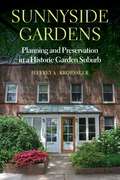
Sunnyside Gardens: Planning and Preservation in a Historic Garden Suburb
Par Jeffrey A. Kroessler. 2021
The first book devoted to this landmark of architecture, urban planning, and social engineeringSituated in the borough of Queens, New…
York, Sunnyside Gardens has been an icon of urbanism and planning since its inception in the 1920s. Not the most beautifully planned community, nor the most elegant, and certainly not the most perfectly preserved, Sunnyside Gardens nevertheless endures as significant both in terms of the planning principles that inspired its creators and in its subsequent history. Why this garden suburb was built and how it has fared over its first century is at the heart of Sunnyside Gardens.Reform-minded architects and planners in England and the United States knew too well the social and environmental ills of the cities around them at the turn of the twentieth century. Garden cities gained traction across the Atlantic before the Great War, and its principles were modified by American pragmatism to fit societal conditions and applied almost as a matter of faith by urban planners for much of the twentieth century. The designers of Sunnyside— Clarence Stein, Henry Wright, Frederick Ackerman, and landscape architect Marjorie Cautley—crafted a residential community intended to foster a sense of community among residents. Richly illustrated throughout with historic and contemporary photographs as well as architectural plans of the houses, blocks, and courts, Sunnyside Gardens first explores the planning of Sunnyside, beginning with the English garden-city movement and its earliest incarnations built around London. Chapters cover the planning and building of Sunnyside and its construction by the City Housing Corporation, the design of the homes and gardens, and the tragedy of the Great Depression, when hundreds of families lost their homes. The second section examine how the garden suburbs outside London have been preserved and how aesthetic regulation is enforced in New York. The history of the preservation of Sunnyside Gardens is discussed in depth, as is the controversial proposal to place the Aluminaire House, an innovative housing prototype from the 1930s, on the only vacant site in the historic district.Sunnyside Gardens pays homage to a time when far-sighted and socially conscious architects and planners sought to build communities, not merely buildings, a spirit that has faded to near-invisibility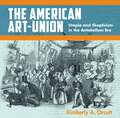
The American Art-Union: Utopia and Skepticism in the Antebellum Era
Par Kimberly A. Orcutt. 2024
The first comprehensive treatment in seventy years of the American Art-Union’s remarkable rise and fallFor over a decade, the New…
York–based American Art-Union shaped art creation, display, and patronage nationwide. Boasting as many as 19,000 members from almost every state, its meteoric rise and its sudden and spectacular collapse still raise a crucial question: Why did such a successful and influential institution fail? The American Art-Union reveals a sprawling and fascinating account of the country’s first nationwide artistic phenomenon, creating a shared experience of visual culture, art news and criticism, and a direct experience with original works.For an annual fee of five dollars, members of the American Art-Union received an engraving after a painting by a notable US artist and the annual publication Transactions (1839–49) and later the monthly Bulletin (1848–53). Most importantly, members’ names were entered in a drawing for hundreds of original paintings and sculptures by most of the era’s best-known artists. Those artworks were displayed in its immensely popular Free Gallery. Unfortunately, the experiment was short-lived. Opposition grew, and a cascade of events led to an 1852 court case that proved to be the Art-Union’s downfall. Illuminating the workings of the American art market, this study fills a gaping lacuna in the history of nineteenth-century US art. Kimberly A. Orcutt draws from the American Art-Union’s records as well as in-depth contextual research to track the organization’s decisive impact that set the direction of the country’s paintings, sculpture, and engravings for well over a decade.Forged in cultural crosscurrents of utopianism and skepticism, the American Art-Union’s demise can be traced to its nature as an attempt to create and control the complex system that the early nineteenth-century art world represented. This study breaks the organization’s activities into their major components to offer a structural rather than chronological narrative that follows mounting tensions to their inevitable end. The institution was undone not by dramatic outward events or the character of its leadership but by the character of its utopianist plan.